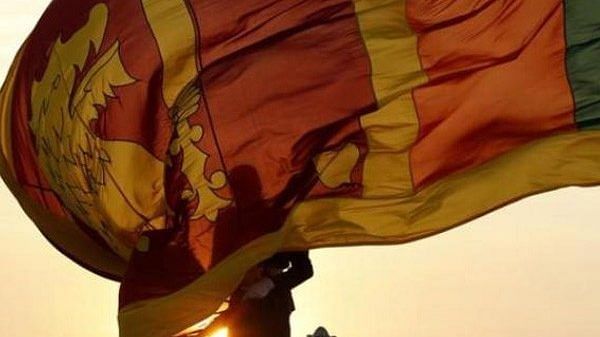Discrimination, suppression and now bankruptcy – Sri Lanka has seen trials and tribulations of all kinds. While the 2022 ‘aragalaya’ — Sinhalese for ‘struggle’ — may seem unprecedented to today’s generation, a look at the past six decades shows how the Indian Ocean island nation has been a hotbed of massive tensions.
On 4 February 1948, the island nation was granted independence as the Dominion of Ceylon and on 22 May 1972, it became the Republic of Sri Lanka. Exactly 50 years later, it is that Republic which pulled the Rajapaksa clan down from their gilded thrones, redefining the true meaning of republic through a sustained and peaceful aragalaya that continued unabated for more than three months.
While former president Gotabaya Rajapaksa, once hailed as a “hero” for the Sinhala-Buddhist majority country for crushing the Tamil rebels, had to run for his life, hopping country to country seeking refuge, Prime Minister Ranil Wickremesinghe was sworn in as Sri Lanka’s interim president Friday till a successor is found.
Earlier this week, Gotabaya became the last of the once-influential Rajapaksa clan to have greedily clung on to power before he fled to safety with his wife and bodyguards, first to Maldives on a military jet and thereafter to Singapore. But he could not manage to get asylum in Singapore either while the shrill cries of “Gota Go Home”, going on relentlessly since March, refused to die down.
From a “model developing country” regaining its centrality in the Indian Ocean post the civil war, Sri Lanka today has become a “bankrupt country” with socio-economic tensions running deep for several decades. That is why Sri Lanka is ThePrint’s Newsmaker of the Week.
Also read: Not majority-minority, Sri Lanka crisis a result of corruption, Rajapaksa family’s greed
Serendib, once a paradise, had deep-rooted tensions
While the island nation, which was called ‘Serendib’ in ancient times, was hailed as a “paradise” for its tropical beauty surrounded by the Indian Ocean that led to their tourism industry booming, underlying tensions began to grow roots with the passing of the Official Language Act — or the ‘Sinhala Only Act’ — in 1956.
At the heart of the tensions was the Tamil-Sinhalese rivalry. As the competition for education and jobs began to gain momentum, the Sinhalese middle-class youth started voicing their support for the Act with an aim to reduce the chances of competition from the Tamils for government jobs.
“The passing of the Sinhala Only Act in 1956 achieved this to a certain extent. Discrimination against Tamils increased, and their recruitment to the army, police and administrative services declined,” noted Hardeep Puri, former diplomat and now a Union Minister, in his book Perilous Interventions: The Security Council and the Politics of Chaos.
As tensions increased, eventually in 1976, the Liberation Tigers of Tamil Eelam (LTTE) was formed demanding a separate homeland or ‘Elam’. And thus began Sri Lanka’s long and bloody civil war, which was mainly a clash between the Sinhalese-dominated Sri Lankan government and the LTTE.
In July 1983, the war officially began as riots spread across Colombo targeting Tamils. It was later called ‘Black July’. The violent war ended in May 2009 but not before the LTTE, which was labelled as a terrorist group, assassinated two world leaders – former Indian Prime Minister Rajiv Gandhi and former Sri Lankan President Ranasinghe Premadasa.
It was under an agreement signed on 29 July 1987 with then-Sri Lankan government that Gandhi sent the Indian Peace Keeping Force (IPKF) to make Tamil fighters lay down arms and come to a peaceful settlement.
Gotabaya, then defence secretary under the presidentship of his elder brother Mahinda Rajapaksa from 2005-2009, chalked out a series of operations to eliminate the LTTE while he gained the title of a ‘war hero’. In one such operation, the chief of the Tamil Tiger movement, Velupillai Prabhakaran, was shot dead by security forces on 18 May 2009, officially ending the war.
Gotabaya, who secretly admired Prabhakaran for his “ruthless dedication” to the cause, was “very happy” when he was killed.
But the episode also saw the killing of 100,000 people while millions, especially minority Tamils, were displaced as refugees.
“Although the Civil War ended in 2009, the current situation in Sri Lanka has only partially improved. A large portion of the Tamil population remains displaced. While there are fewer political and civil rights issues, instances of torture and enforced disappearances persist even in recent years,” notes a report in the Harvard International Review.
Sri Lanka is also facing — despite strong opposition by the Rajapaksa government — a UN-led international probe into the alleged human rights violations during the final phase of the war.
The Harvard report adds, “The Sri Lankan government often surveils and tracks people linked to LTTE. The Sri Lankan military still occupies predominantly Tamil areas designated as ‘high-security zones’ though to a lesser extent than during the war. The government’s Prevention of Terrorism Act (PTA) targets mostly Tamils.”
Also read: I got tear-gassed in Colombo, but finding treatment was even more eye-watering
Lesser-known facts about the protests
During the peak of anti-government protests, the majority ethnic Sinhalese group, for the first time, remembered ethnic Tamils brutally killed in the final stages of the civil war. Before this such events were mostly held privately.
While the anti-government protesters of Sri Lanka have set an example for other democracies, Tamil activists say security forces would not have shown such restraint had it been them protesting and in Tamil-concentrated areas.
“There are always two different treatments of protesters. It depends on who you are and where you are,” Anushani Alagarajah, a Tamil civil rights activist based in Jaffna in northern Sri Lanka told the BBC.
Views are personal.
(Edited by Prashant)



